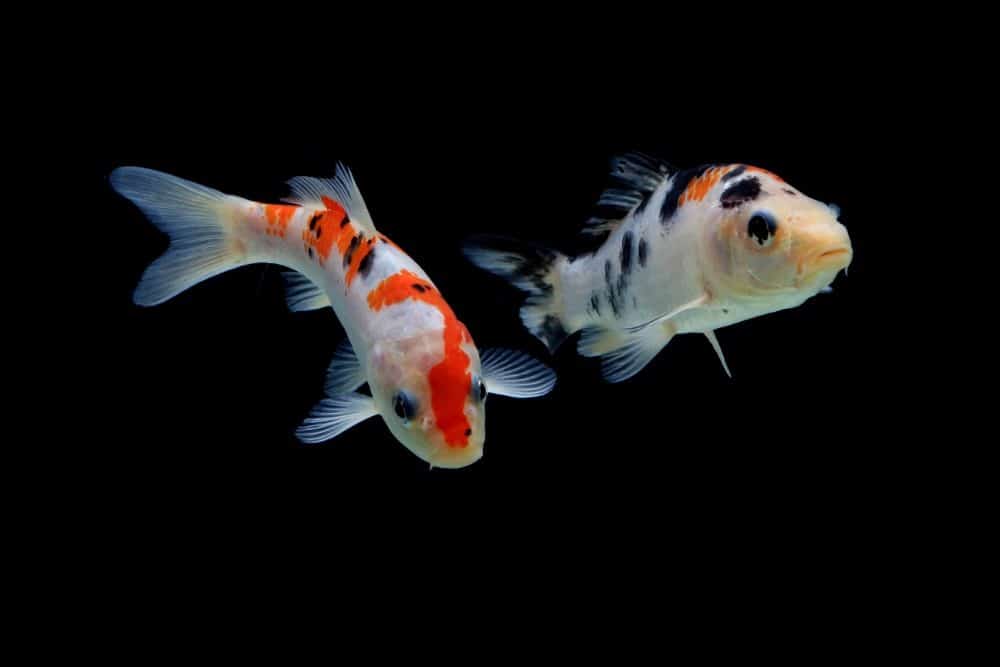
It's hard not to fall in love with bright and beautiful Koi fish. Their gorgeous patterns and friendly personalities make them a sought-after species that thrive in outdoor ponds worldwide.
Yet, what if you're a Koi enthusiast who doesn't have much outdoor space? Maybe you live in an apartment or townhome where building a Koi pond isn't an option. Ideally, Koi are best suited as outdoor pond fish, but... can Koi be kept in an aquarium instead?
The answer is that it depends on a variety of factors. If you're dying to keep Koi as an aquarium fish, it's certainly possible, but there are a few things you need to know.
In general, home aquariums are ideal for smaller fish, like angelfish, goldfish, or betta, which won't grow more than a few inches in length. Koi fish, meanwhile, can grow up to three feet when fully mature, making it hard for them to fit in a fish tank in your home.
That's not to say it's impossible. According to the Japan Nishikigoi Promotion Association (JNPA), you can successfully raise young Koi fish inside an aquarium. However, it will need to be large.
Recommendations vary for Koi, but most agree that even for small fish, you'll need between a 30 and 50-gallon tank. For mature Koi, that number grows to a koi fish tank size of 400 gallons or more!
That's why Koi aquariums are a better bet for baby koi that you plan to transfer to a backyard pond as they mature. In that scenario, putting Koi fish in a tank is a great idea.
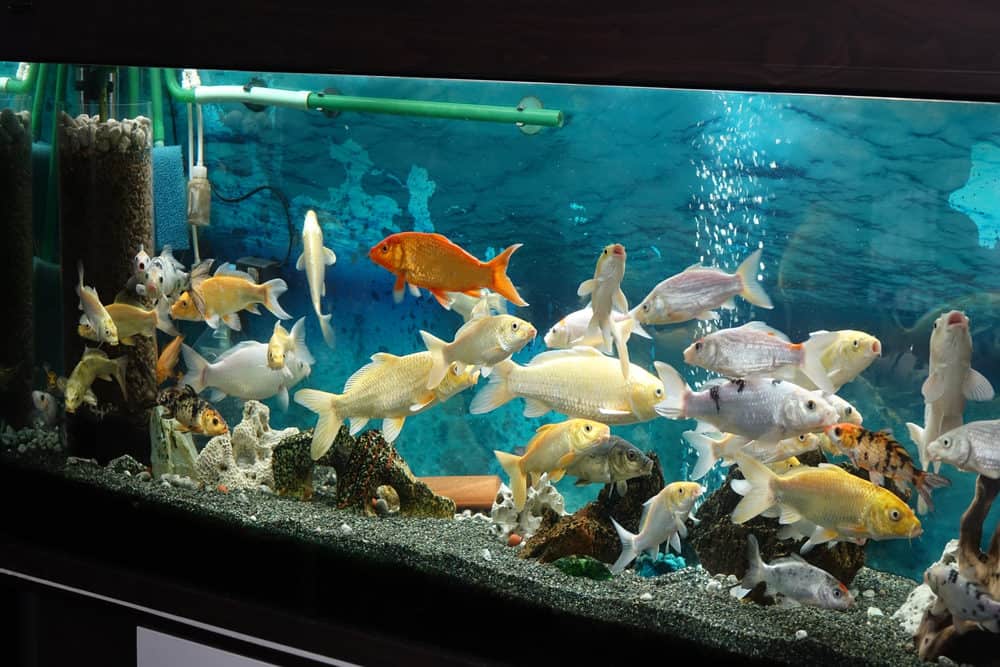
You can keep your baby fish indoors where you can see and monitor them easily. Then, when they get larger, you can move them outdoors where they can swim more freely.
If you happen to have a giant aquarium that you want to fill with mature Koi, though, you need to know a few other things.
For one, Koi have a long lifespan. They can live up to fifty years in captivity. Further, an aquarium needs near-constant maintenance, including regular cleanings. So, keeping adult Koi indoors is a serious long-term commitment.
It's also important to note that Koi are prettiest when viewed from above, as you would see them from a pond. That's how you can best see the patterns and colors Koi are famous for.
Plus, many Koi owners enjoy watching their pet fish jump, which they do pretty often, especially if you have food to offer them.
If they're in an aquarium, you won't get to see their full patterns or their athletic prowess, which may make in-home Koi ownership a less enticing prospect.
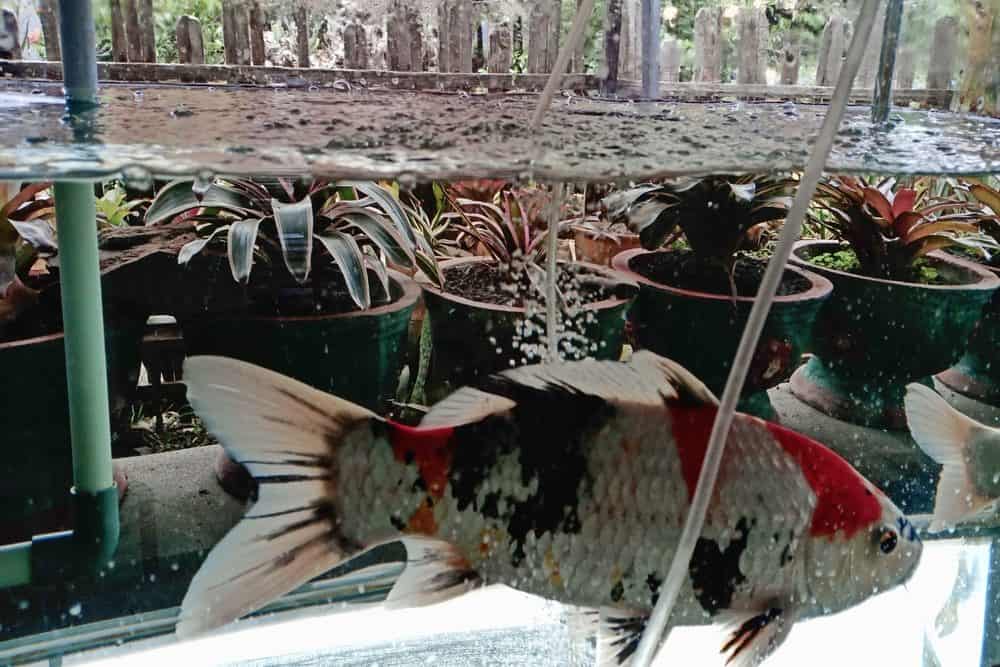
If you insist on keeping mature Koi indoors and happen to have the space, your best option might be to create a Koi pond aquarium. They are kind of like having your own indoor pond. Pond aquariums are a newer trend that allows you to build a pond inside your home or office space.
You can dig the pond into the floor along an extra-wide hallway or in the unused space beneath a staircase. Or, you can opt for an "instapond." These are pre-built structures that can sit anywhere you have room. They look a bit like an above-ground pool, with windowed sidewalls so you can see your fish from every angle.
In either case, for full-grown Koi, you'll need your pond aquarium to be large. For baby Koi, though, you can create a pond-like environment from the base of a fountain or other, smaller receptacle. This allows you to better view your Koi's unique coloring and creates a striking piece of home artwork.
If you've settled on an aquarium for your Koi, it's crucial to understand a few things. Below we'll walk you through everything you need to know, from setting up the tank to maintaining it long-term.
Start by finding a space for your aquarium to sit. The area needs to be draft-free and away from direct sunlight. Ideally, you'll also keep it out of noisy or high-traffic areas.
Koi are very hardy fish, but like almost all creatures, they don't like sudden and drastic shifts in temperature, which is why you should avoid drafty spaces.
They also prefer clear water that's not overgrown with algae. Sunlight promotes algae growth, so avoid areas of your home with direct light.
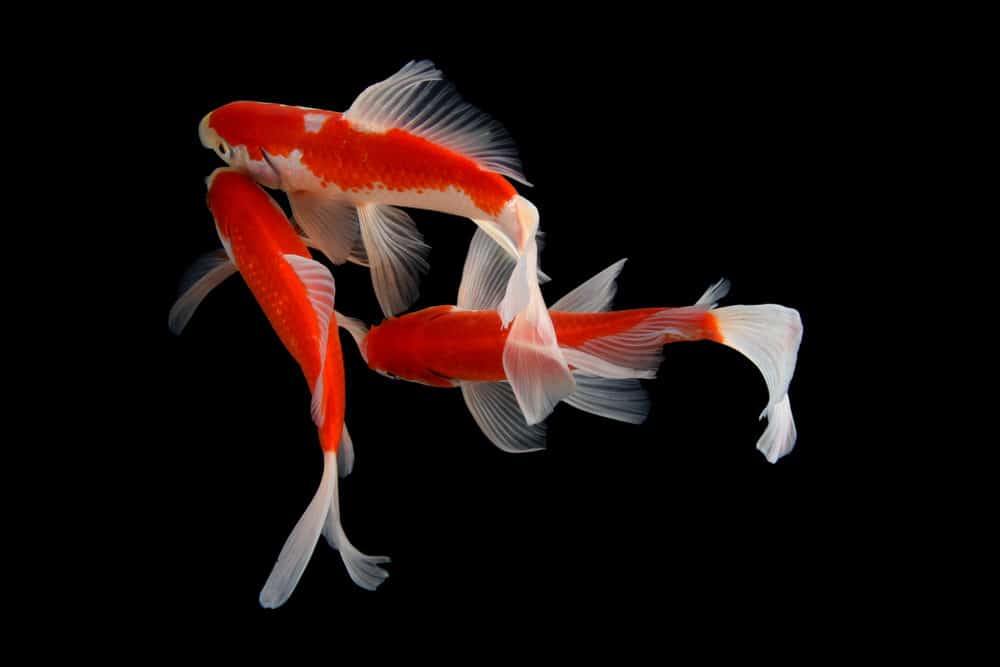
As for the noise and traffic, Koi are intelligent fish that prefer their peace and quiet. Putting them in high-traffic or noisy areas can stress them out, leading to health problems later on.
You should also ensure your aquarium has a cover. Remember, Koi love to jump, and they can jump pretty high. You don't want them to jump out of their tank and onto the floor! A cover will also prevent excess evaporation.
When it comes to water temperature, Koi prefer temps between 60 and 75 degrees Fahrenheit. Of course, they can survive in much greater extremes, anywhere from 45 to 95 degrees Fahrenheit. However, they'll go dormant in cold water, and hot water starts to stress them out, so try to keep the temperature stable and in the ideal range.
Like all fish, Koi eat and discard their waste in the same water. That means you'll need a good filtration system to keep your Koi fish healthy.
You want a filter that can process all of the water in your tank 3-5 times per hour. Use manufacturer guidelines to determine the size you'll need, given the amount of water in your tank.
Koi fish are scavengers that love to forage in muddy pond bottoms. To recreate this in your aquarium, use smooth gravel at the bottom of your tank. Your fish will love sifting through it.
Just be careful that none of the pieces are rough or sharp. Koi have delicate fins that will tear against sharp rocks.
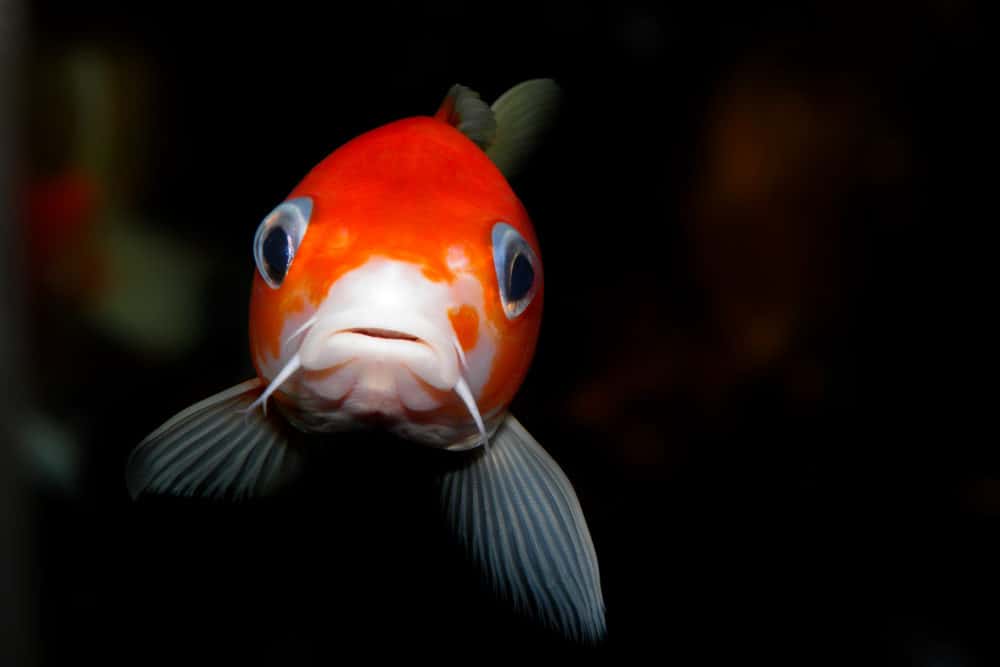
Once you have your tank set up, it's time to introduce your Koi to their new home. Keep in mind that as exciting as this is for you, it's incredibly stressful for your fish. Taking a few precautions can make it a far smoother process.
Assuming your Koi is in a plastic bag for transport, float the bag on the water for about ten minutes first. That allows the water in the bag to adjust to the tank's temperature, making it a little easier for your Koi fish to adapt.
Then, use a net to transfer your Koi into its new home. As tempting as it is to dump the bag with its old water into the tank, doing so can create massive changes in your aquarium environment. If there are any other fish in there, they'll pay the price for it.
Once your Koi are settled in their tank or aquarium pond, you'll find that they're friendly and low-maintenance pets. They'll eat directly out of your hand if you let them, but they can also survive up to a week without food, allowing you to take the occasional weekend trip.
Of course, you'll need to keep the tank clean and watch out that your Koi aren't outgrowing their container. If they are, you might need to find a pond or giant aquarium for them to live in instead.
Don’t be alarmed if you notice your Koi fish stop eating or slow down in winter. In cooler temperatures, they may go dormant.
However, if you see abdominal swelling, strange swimming patterns, or catch your fish scraping their bodies against the rocks in your tank, call a veterinarian right away.
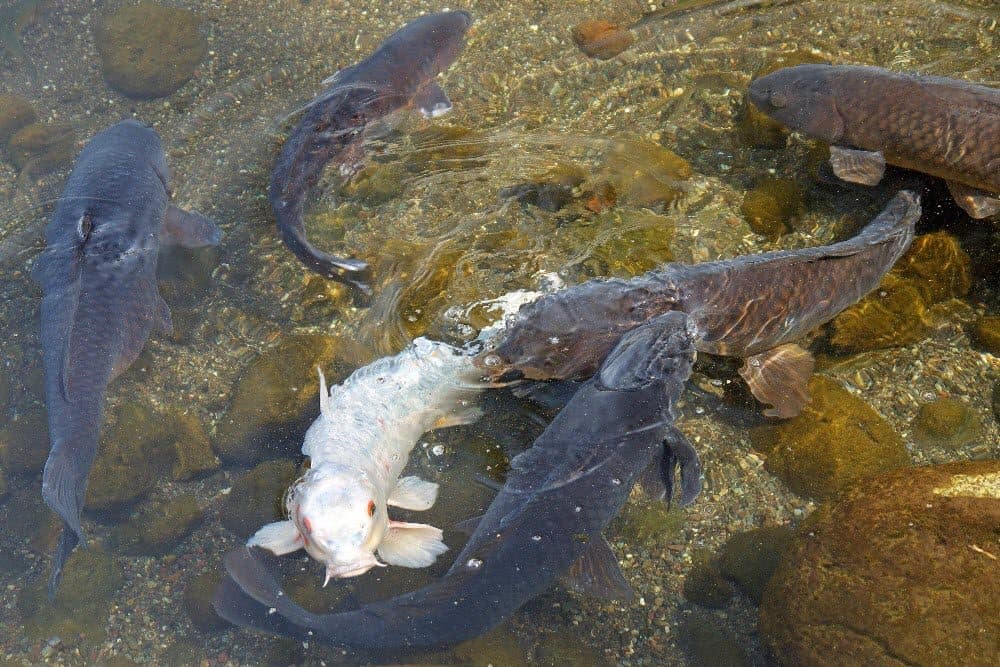
While an outdoor pond is preferable for raising Japanese koi fish due to their large size, it is entirely possible to keep the koi indoors as long as the tank or aquarium is properly filtrated and clean, as well as placed in a stress-free environment with carefully monitored water temperature. Familiarity with the needs and habits of this beautiful fish will go a long way to providing them with a healthy and, hopefully, extended life.



